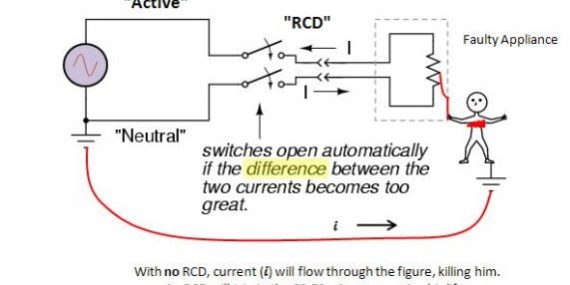RCD is the acronym for Residual Current Devices. However, most people will likely better know them as safety switches. The devices work by monitoring the flow of current through electrical wires, to ensure that the current is equal in the neutral and active wires. Any imbalance in the flow of electricity is known as an Earth Leakage.
Earth leakage is caused by circuit faults or damaged electrical equipment, and can result in you or a family member suffering serious electrocution or death. The RCD, once it detects Earth leakage, immediately cuts off the flow of electricity and greatly reduces the chances of serious injury.
Where Are RCD’s Installed?
RCD’s are installed at the meter box and distribution board of your home. These are the main sources of electricity that supplies the power and lighting to the home. However, the requirement for two RCD Safety Switches only became law in the year 2000. Older homes may only have one RCD monitoring the main power supply.
Other types of RCD’s include those which are combined with Circuit Breakers, and portable RCD’s which can be attached to extensions. The former is normally installed in older homes, where retrofitting the meter box would prove difficult or costly to the home owner. The latter provides homeowners with additional safely when using electrical appliances outside.
You can also install power point RCD’s, which are installed at the first power point after the meter box, to provide additional protection to rooms in your home. If you have a workshop, where there exists a higher risk of electrocution, you should seriously consider fitting this type of RCD.
Testing and Maintenance of a RCD
Like any other device, RCD Safety Switches are subject to damage or faults. As such, it is important to test each RCD in your home at least every three months. Testing your RCD Safety Switches is simple. First locate the device, which you will recognize by the ‘Test’ button on the front of each RCD.
When the test button is pressed and then released, the RCD Switch will cut off all power supply to the protected currents. Essentially, the RCD should behave in exactly the same way you would expect it to when an Earth Leakage is detected. Once you are satisfied that the test was successful, you will need to switch the power back on.
If the RCD test does not cut off electrical supply to the protected power source or lighting, you will need to contact a qualified electrician to have the affected Safety Switches checked for faults. Remember, you as the homeowner are responsible for the safety of those living in or visiting your home. Do not take the risk by ignoring faults with what is otherwise a potentially lifesaving device.
New Builds
Besides the two main RCD Safety Switches required by law, you can choose to fit additional devices as part of a new build. There are a number of good reasons to do so, which will provide additional safety and may even add value to your home. Busy households, for instance, may benefit from additional RCD’s.
Small children and teenagers are less aware of the risks presented by faulty electrical equipment, so having that added level of protection may be worth the money spent. When it comes time to sell your home, prospective buyers certainly won’t be put off by the fact that you have built in added protection against electrocution.
Additional Safety Advice
It is worth adding that having RCD’s fitted in a home does not provide 100% protection from electrocution. You should still exercise care and common sense when dealing with electrics, carrying out maintenance or DIY in your home. That means switching off the power when handling electrical wiring, and using a pipe and wire detector before drilling holes in walls. You can also get additional safety information from an electrician, builder, and from the Fair Trading Website.





